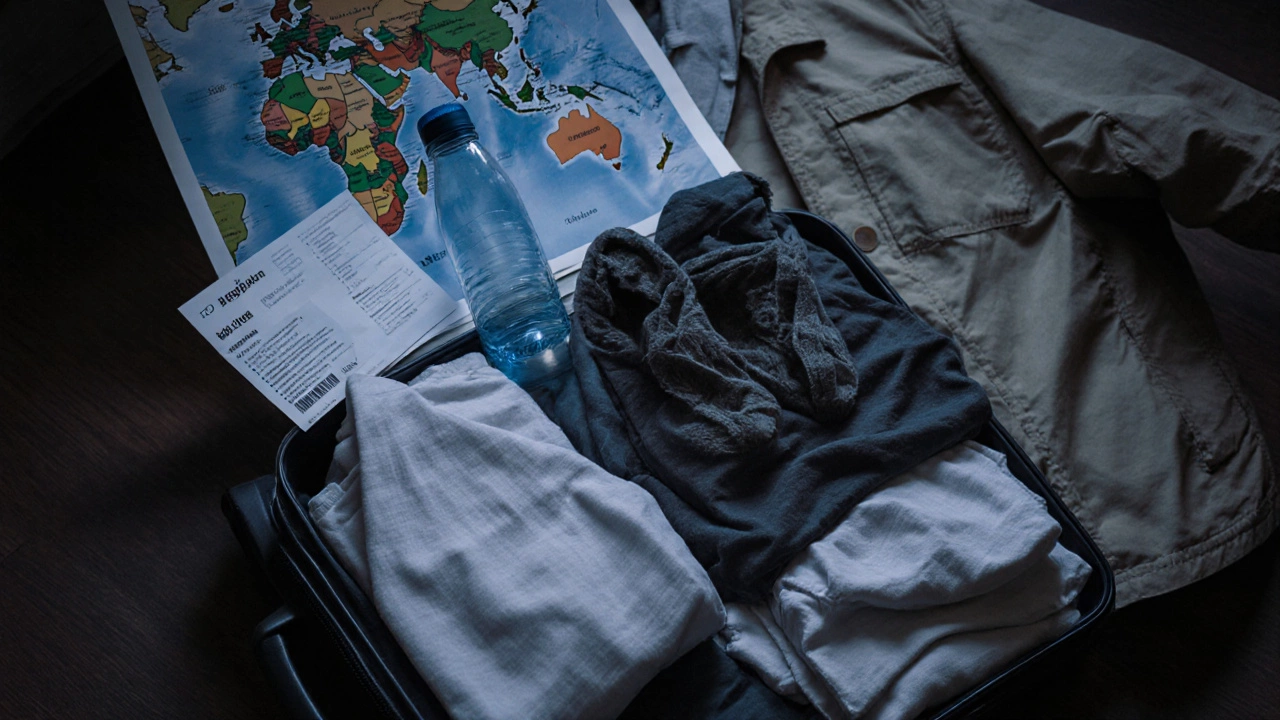Best Month to Fly to South India for Perfect Weather and Fewer Crowds
 Nov, 8 2025
Nov, 8 2025
South India Travel Planner
Plan Your South India Trip
Find the ideal travel window based on your priorities
Your Ideal Travel Window
Travel Tip
Why This Time is Perfect
What to Expect
Weather
Crowds
Planning a trip to South India? The biggest mistake travelers make is showing up in the wrong month. You don’t want to land in Kerala during monsoon season with your bags soaked, or get stuck in Chennai’s 40°C heat without AC. The truth is, South India isn’t one place-it’s a patchwork of coastlines, hills, and ancient temples, each with its own rhythm. And the best month to fly to India for this region? It’s not a single answer, but there’s one sweet spot that works for most people.
October to March is the Goldilocks Window
If you want dry weather, cool breezes, and clear skies for temple visits and beach walks, aim for October to March. That’s when the monsoon has cleared out, the humidity drops, and the temperature hovers between 24°C and 32°C across most of South India. This is when locals say the region truly wakes up.
October and November are especially quiet. The rains have just ended, the landscape is still green, and hotels drop prices by 20-30% to fill rooms. You’ll find fewer crowds at Mysore Palace, less waiting at the Meenakshi Temple in Madurai, and more space on the beaches of Kovalam. Flights from Auckland to Chennai or Bangalore are often cheapest in October, with airlines like Air India and Singapore Airlines offering direct deals.
December to February is peak season, but for good reason. In Coonoor, the Nilgiri Hills feel like a cool escape from the heat. In Pondicherry, the French Quarter is perfect for evening strolls. In Goa, the beaches are clean, the water is calm, and seafood shacks are open for business. This is when you’ll see the most tourists-but also the most vibrant festivals. Diwali in November, Christmas in December, and Pongal in January turn towns into celebrations.
Why Avoid April to September?
April to June? It’s hot. Like, oven-hot. In Hyderabad, temperatures regularly hit 42°C. In coastal areas like Mangalore, humidity climbs above 85%. You’ll sweat through your clothes before breakfast. Flights are more expensive too-airlines know you’re desperate for relief and raise prices.
June to September is monsoon season. Kerala gets over 2,500 mm of rain in three months. The Western Ghats turn into waterfalls, roads flood, and ferries stop running. While some travelers love the greenery and solitude, most find it frustrating. You can’t hike to Ooty’s top viewpoints when the trails are muddy. You can’t photograph the rock temples of Mahabalipuram when it’s pouring.
Even in September, when the rain slows, the humidity sticks around like a bad roommate. Mosquitoes come out in full force. And if you’re flying from Auckland, you’ll be trading one rainy season for another.
Best Month for Each South India Experience
Not everyone travels for the same reason. Here’s what works best for different kinds of trips:
- Beach lovers: December to February. Water is warm, skies are clear, and the sand stays dry. Goa, Kovalam, and Gokarna are at their best.
- Hill station seekers: October to March. Ooty, Coonoor, and Munnar are foggy and fresh. Pack a light jacket-nights dip to 15°C.
- Culture and temple fans: November to February. Festivals like Pongal (mid-January) and the Mysore Dasara (October) are in full swing. Temples are bustling but not overwhelming.
- Budget travelers: October and November. Post-monsoon deals on flights and homestays are real. You’ll get luxury resorts for half the price of December.
- Photographers: Late February to early March. The light is golden, the air is clear, and the crowds are thinning before peak season hits.

Flight Deals and Booking Tips
Flights from Auckland to South India usually connect through Singapore, Dubai, or Kuala Lumpur. The cheapest tickets appear 4-6 months in advance. Set up alerts on Google Flights or Skyscanner for routes like AKL→BLR (Bangalore) or AKL→MAA (Chennai).
October is your best bet for low fares. Airlines often run promotions right after the Indian monsoon ends. In 2024, round-trip fares from Auckland to Bangalore dipped below NZ$1,100 in early October. By January, they climbed past NZ$1,700.
Book mid-week flights. Tuesday and Wednesday departures are typically 15% cheaper than weekend flights. Avoid flying right before Diwali or Christmas-prices spike, and seats vanish.
What to Pack for the Best Month to Fly to India
Even in the best months, South India doesn’t play by Northern Hemisphere rules.
- Light, breathable cotton clothes-no jeans. They trap heat.
- A light rain jacket, even in dry months. Sudden showers still happen.
- Good walking shoes. Temple steps are uneven, and cobblestone streets aren’t kind to sandals.
- High-SPF sunscreen. UV levels stay high even on cloudy days.
- Reusable water bottle. Tap water isn’t safe. Bottled water is cheap, but plastic waste is a problem.
- Small gift for temple visits-flowers or fruit. It’s a local custom, not a requirement, but it’s appreciated.

Real Traveler Story: Why April Almost Ruined My Trip
A friend from Wellington booked her South India trip for April 2024 because it was the only time she could take leave. She landed in Kochi expecting cool breezes. Instead, she spent three days in a hotel room with the AC on full blast, too hot to go out. She missed the backwaters entirely-the boats weren’t running due to low water levels. She came home exhausted and disappointed.
She went back in November 2025. Same itinerary. Same hotel. This time, she woke up to birdsong, walked barefoot on the beach at sunrise, and ate fresh coconut water under a palm tree. She said it felt like a different country.
Final Tip: Don’t Just Pick a Month-Pick a Mood
Do you want quiet and cheap? Go in October. Do you want festivals and energy? Go in December. Do you want perfect weather and fewer people? Aim for late February.
There’s no single "best" month for everyone. But if you want to avoid heat, rain, and inflated prices, and still experience South India at its most colorful and welcoming, then October to March is your window. And if you’re flying from New Zealand, start looking at flights in April or May-book by July, and you’ll be sipping filter coffee in Mysore by October.
Is it safe to travel to South India in the monsoon?
Yes, it’s safe-but not always practical. Roads flood, trains get delayed, and some remote hill routes close. If you’re experienced with rain-heavy travel and don’t mind disruptions, you can still go. But for most travelers, the discomfort outweighs the benefits. Stick to the dry season unless you’re specifically chasing monsoon landscapes.
What’s the cheapest month to fly to South India?
October is typically the cheapest. After the monsoon ends, airlines drop prices to fill seats before the holiday rush. You’ll find round-trip fares from Auckland under NZ$1,100 if you book early. November is a close second.
Can I visit the backwaters of Kerala in November?
Absolutely. November is one of the best months. The water levels are high enough for houseboat rides, the skies are clear, and the humidity has dropped. You’ll avoid the crowds of December and still enjoy lush greenery.
Are there any festivals I shouldn’t miss in South India?
Yes. Pongal (mid-January) in Tamil Nadu is a four-day harvest festival with colorful kolam art and cow decorations. Mysore Dasara (October) features a grand procession with elephants and fireworks. Onam in August is big in Kerala, but it’s during monsoon season-so plan carefully.
Should I avoid flying during Diwali?
If you want cheap flights and quiet streets, yes. Diwali (usually in October or November) is India’s biggest festival. Airports are packed, hotel prices double, and some attractions close early. But if you want to experience the lights, fireworks, and family celebrations, it’s unforgettable. Just book everything months ahead.